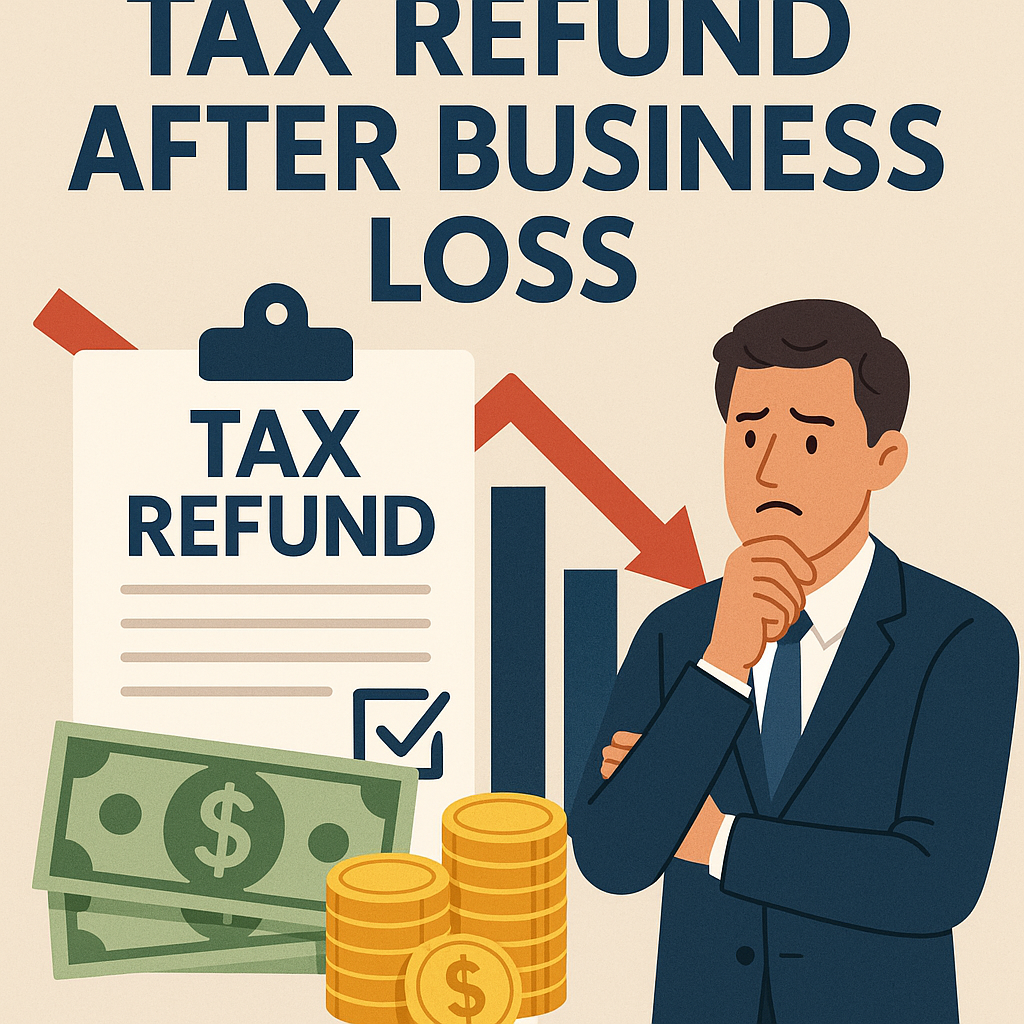Operating at a loss is common for new ventures, but how does this affect your taxes? When expenses outweigh earnings, that shortfall could influence your annual filings in unexpected ways. For self-employed professionals and entrepreneurs, grasping these rules is critical for financial planning.
Losses from commercial activities often reduce taxable income across all sources. This adjustment might lower what you owe or even trigger a refund—if you’ve paid enough through withholdings or quarterly estimates. The outcome hinges on factors like entity type, existing liabilities, and IRS guidelines.
Pass-through structures (think sole props or LLCs) let owners apply losses against personal earnings. Corporations follow different protocols. Remember: annual deduction limits exist, though unused amounts can offset future profits. The IRS also monitors consistent deficits—three+ years of losses might prompt a “hobby business” designation, stripping deduction rights.
Key Takeaways
- Commercial shortfalls may lower taxable income, potentially increasing refunds or reducing owed amounts
- Entity structure determines how losses interact with personal finances
- Refunds require prior tax payments exceeding adjusted liabilities
- Annual loss deduction caps apply, with excess rolling to future filings
- Persistent deficits risk IRS reclassification as non-deductible hobbies
Understanding Business Losses
A business loss isn’t just a financial setback—it’s a tax concept with specific rules. These shortfalls occur when expenses like equipment, marketing, or operational costs exceed your business income. For active ventures, this negative balance can become a strategic tool during tax season.
What Counts as a Loss?
Imagine driving for rideshare platforms: $1,000 earned versus $4,000 spent on gas and car maintenance creates a $3,000 net loss on Schedule C. This applies to hands-on operations—side gigs, freelancing, or storefronts. Passive activities like rental properties follow separate IRS guidelines.
Real-World Applications
New consultants often face this scenario. Initial investments in software or advertising might overshadow early client payments. Similarly, food trucks could spend more on permits and ingredients than sales in their first year.
Key distinctions matter:
- Active losses reduce taxable wages or freelance earnings
- Startup phases often show deficits the IRS deems legitimate
- Documentation proves your profit-seeking intent to avoid “hobby” labels
Sole proprietors report these figures on Schedule C, where losses directly lower personal tax liabilities. The system acknowledges that building sustainable small business revenue takes time—and smart deduction strategies help bridge that gap.
How Business Loss Reduces Your Taxable Income
Financial setbacks in business can lead to strategic tax advantages. When commercial activities operate at a deficit, that negative balance becomes a tool for reshaping your annual obligations. The IRS allows owners to apply these shortfalls against various earnings streams, creating cascading benefits.
Offsetting Other Income Sources
Business losses act like financial sponges, absorbing taxable income from multiple streams. Consider a graphic designer earning $75,000 from freelance work while maintaining a part-time retail job. A $8,000 deficit from their design studio reduces their total taxable earnings to $67,000. This adjustment impacts:
- Wage income from employers
- Contractor payments reported on 1099 forms
- Investment dividends or interest
Joint filers can even apply losses against a spouse’s earnings. The effect? Lower adjusted gross income (AGI) often triggers eligibility for credits like education deductions or retirement savings incentives.
Tax Benefits for Small Business Owners
Shrinking your AGI does more than lower income tax rates. It unlocks savings across your entire financial picture. For example:
| Income Before Loss | Tax Bracket | Income After $10k Loss | New Bracket |
|---|---|---|---|
| $95,000 | 24% | $85,000 | 22% |
| $44,000 | 22% | $34,000 | 12% |
This bracket shift means paying $2,200 less on the second scenario. Side hustlers gain particular advantages—their main job’s withholdings often create overpayments that combine with loss-driven AGI reductions to boost potential refunds.
Remember: These strategies require meticulous record-keeping. Track every expense to validate your loss claims during IRS reviews.
Will I Get a Tax Refund If My Business Loses Money
Many entrepreneurs wonder about potential refunds when their ventures operate in the red. While commercial deficits influence tax outcomes, they don’t automatically generate refunds. The key factor lies in your prior payments to the IRS throughout the year.
Eligibility and Refund Triggers
Refunds emerge when total payments—like withholdings from W-2 jobs or estimated tax payments—exceed your adjusted liability. Imagine a marketing consultant with $50,000 in salary withholdings and a $20,000 business shortfall. Their reduced taxable income could turn those withholdings into an overpayment.
Common scenarios include:
- Employees with side ventures: Regular job withholdings often cover more than needed after losses lower combined income
- Freelancers using quarterly payments: Business deficits may shrink final obligations below prepaid amounts
Impact of Overpaid Estimated Taxes
Self-employed professionals frequently make four annual estimated tax payments. A profitable Q1 might lead to higher payments, but subsequent losses can create discrepancies. If your final liability drops below prepaid totals, the IRS issues difference refunds.
Example: A photographer pays $12,000 in quarterly installments, then claims $8,000 in losses. Their $4,000 overpayment becomes a refund, even with no annual profit.
Remember:
- Losses don’t manufacture refunds independently—they amplify existing overpayments
- Unused deficits roll forward, offering future tax relief
- Documentation proves payment history if the IRS questions refund claims
Excess Losses: Limits and Carryforward Rules
The IRS doesn’t let losses erase all tax responsibilities. Annual caps ensure deductions remain proportional to income levels. These guardrails prevent unlimited write-offs while preserving long-term financial flexibility.
Yearly Deduction Thresholds
Current rules set distinct limits based on filing status. For 2021:
- Married couples filing jointly: $524,000 maximum loss deduction
- Single filers and other statuses: $262,000 cap
These figures adjust periodically for inflation. A business loss exceeding these amounts can’t zero out all taxable income. If you earn $200,000 from other sources, losses beyond that figure get parked for future use.
Future-Proofing Unused Losses
Post-2017 tax reforms reshaped carryforward policies. Now:
- Excess losses roll forward indefinitely
- Annual usage capped at 80% of taxable income
- No carrybacks to prior years
Example: A $100,000 unused loss from 2024 could offset up to $80,000 of 2025 profits. This creates staggered tax relief while maintaining revenue streams for public services.
“Carryforwards turn temporary setbacks into strategic advantages,” notes tax strategist Laura Chen. “They’re rainy-day funds for profitable years.”
Maintain detailed records of carried amounts. Software tools or CPA services help track expiration dates and application limits. Proper documentation ensures you maximize every dollar when fortunes shift.
Avoiding Hobby Classification for Consecutive Losses
Repeated annual deficits raise red flags at the IRS. The agency distinguishes between genuine enterprises and recreational pursuits through its “hobby loss rule”. Understanding this threshold helps protect your right to claim essential business deductions.
Understanding the IRS Safe Harbor Guidelines
Tax authorities offer a practical benchmark: show profits in three of five consecutive years. This safe harbor creates presumption of commercial intent. However, meeting this standard doesn’t guarantee approval—and missing it doesn’t mean automatic rejection.
Key exceptions apply:
- Startups in development phases
- Industries with long gestation periods (e.g., vineyards)
- Businesses affected by natural disasters
Evaluating Profit Motive and IRS Criteria
When assessing activities, the IRS examines nine factors. Three carry particular weight:
- Operational adjustments: Changing strategies to reduce losses
- Time investment: Hours spent comparable to profitable ventures
- Expertise: Formal training or hiring specialists
“A dog grooming service that tracks industry trends and upgrades equipment demonstrates clearer profit intent than one using personal checking accounts for expenses,” explains enrolled agent Mark Rivera.
Maintain separate bank accounts and professional licenses. Document consultations with business coaches. These steps build your case during audits while strengthening operations.
Navigating Small Business Tax Structures
Nine out of ten U.S. companies operate under pass-through taxation—a system where profits flow directly to owners’ personal filings. This fundamental choice between entity types shapes how losses translate into tax relief opportunities.
Pass-Through vs Corporate Frameworks
Pass-through structures like LLCs and S corps avoid double taxation. Owners report earnings on individual returns, blending business results with wages or investment income. C corporations file separate returns, paying a flat 21% rate before distributing dividends.
| Feature | Pass-Through Entities | C Corporations |
|---|---|---|
| Tax Level | Personal returns only | Corporate + personal |
| Loss Utilization | Offset other income | Confined to business |
| Refund Source | Personal overpayments | Corporate estimates |
Strategic Tax Outcomes
Entity selection creates ripple effects:
- Sole proprietors blend losses with spouse’s W-2 withholdings
- Partnerships allocate deficits across multiple returns
- C corps preserve losses for future profit offset
“Choosing between entity types is like selecting a vehicle,” says CPA Elena Torres. “Pass-throughs offer immediate fuel savings, while corporations build equity for long hauls.”
Consult tax professionals when restructuring. Proper alignment between operational goals and filing status maximizes financial recovery during challenging years.
Maximizing Business Deductions and Credits
Smart financial navigation turns business challenges into opportunities. Every dollar saved through strategic write-offs strengthens your venture’s foundation. The key lies in understanding what costs qualify—and how credits amplify savings.
What Expenses Qualify?
The IRS allows deductions for ordinary and necessary operational costs. Common examples include:
- Marketing campaigns and client acquisition efforts
- Insurance premiums protecting assets
- Professional development courses
Meal expenses during business meetings often qualify at 50% deduction rates. Keep receipts for travel costs like mileage or lodging—these add up quickly.
Powerful Tax Credit Opportunities
Credits provide dollar-for-dollar reductions in owed amounts. Many small business owners overlook these goldmines:
- Research & Development credits for product innovators
- Hiring incentives through the Work Opportunity program
- Energy-efficient equipment upgrades
Unlike deductions lowering taxable income, credits directly shrink your final bill. A $1,000 credit means $1,000 less owed—or added to refunds.
Consult a tax professional to audit your spending patterns. Proper documentation ensures you capture every eligible benefit while staying compliant. Remember: Organized records transform daily operations into long-term financial advantages.







